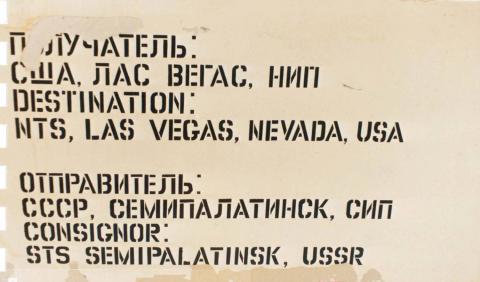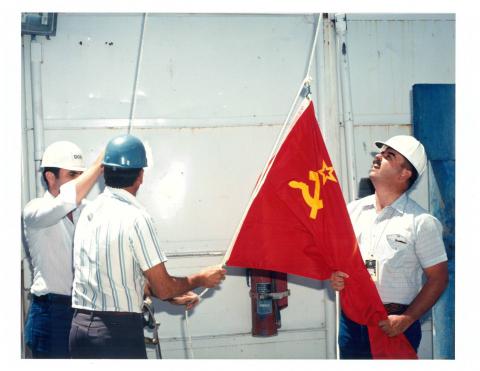Lab-to-Lab: US-Russian Lab-to-Lab Collaboration Story [Archived]
- Home
- Joint Verification Experiment
- Science Collaboration
- Nuclear Materials
- Nuclear Weapons
- Nuclear Experts
- What’s New
30th Anniversary of JVE | 30 Years Since a Historic Breakthrough
30 Years Since a Historic Breakthrough
On May 30, 1988, the US Secretary of State George Shultz and the Soviet Foreign Minister Edward Shevardnadze met in Moscow to sign important arms control documents. One of them was Agreement on Joint Verification Experiment (JVE), a unique arrangement to conduct two nuclear test explosions, one in the American and another in the Soviet test site. For each test explosion, both the US and the Soviet teams were to be present on the ground with their sets of monitoring equipment. The experiment was designed to compare the methods for monitoring the size of a nuclear explosion. In its turn, this comparison would enable agreement on the verification protocol of the Threshold Test Ban Treaty and thus bring about its ratification by the US Congress and the Soviet Supreme Council. This is exactly what happened and in 1990 the Treaty was in force.

To: Nevada From: Semipalatinsk
Back in 1988, the developments that unrolled in the course of JVE manifested the profound shift in the approach to international security. The Soviet flag was raised over the Nevada Test Site. Deep in the then-Soviet Union, the locals of a place adjacent to the Semipalatinsk Test Site in Kazakhstan watched with disbelief a huge US Air Force C5-B cargo transport aircraft land at the STS airfield. “Is this war?” someone reportedly asked.
This was the opposite of war – the former nuclear adversaries, after decades each on their respective side of the Iron Curtain, met face to face and worked side by side in the interest of a safer world. JVE left a profound imprint in the US and Soviet/Russian nuclear weapons communities. Friendships, partnerships, scientific collaborations and a sense of shared professional identity sprung from the joint work under JVE.
In 2013, the DOE and Rosatom sent their delegations to the Nevada Test Site to celebrate the 25 anniversary of this unique event. In 2018, the most notable feature of the 30th anniversary has been official silence on both sides. The spirit of JVE is still alive though – in the hearts and mind of the scientists. Their words speak for themselves. We were given permission to publish the letter the JVE veterans of VNIITF in the city of Snezhinsk sent to Sig Hecker in Septermber 2018. The Snezhinsk scientists write:
JVE launched widest possible interaction between scientists of the two Nuclear Powers in the defense and, even more importantly, civil spheres. The interaction involved thousands of scientists on both sides. It facilitated setting-up personal contacts and friendly relations between many of them.
We ask you, dear Sig, to pass our warmest regards, best wishes and congratulations on the 30th anniversary to the American JVE participants.
Continuing our work for the Russian atomic industry, we do our best to share our experience of useful bilateral cooperation with the young generation of scientists as well as our hope for its renewal.
In his response, Sig Hecker wrote:
We agree that sharing our positive experience of working together for more than 20 years with the next generation of scientists and engineers is very important. I try to do so in my classes at Stanford University and in many lectures I present around the U.S.
I will pass your nice note on to as many of our former JVE colleagues as possible.
We want to keep the hope for the renewal of cooperation alive. JVE was a breakthrough that would not have been believed possible just a year prior to when it actually happened. It was possible 30 years ago. Turn-arounds and breakthroughs will be possible again.

Soviet flag raised at Nevada Test Site January 1988
